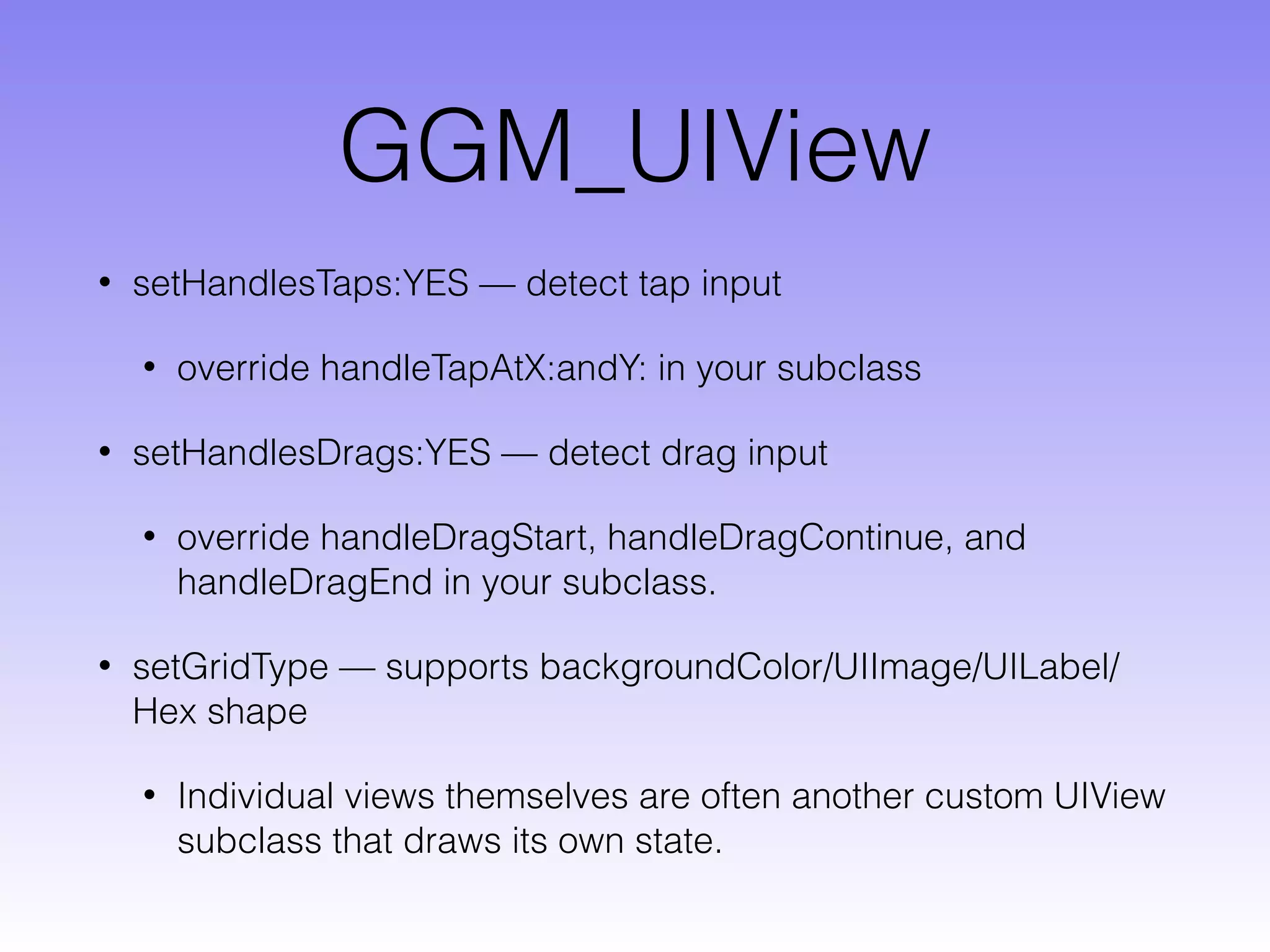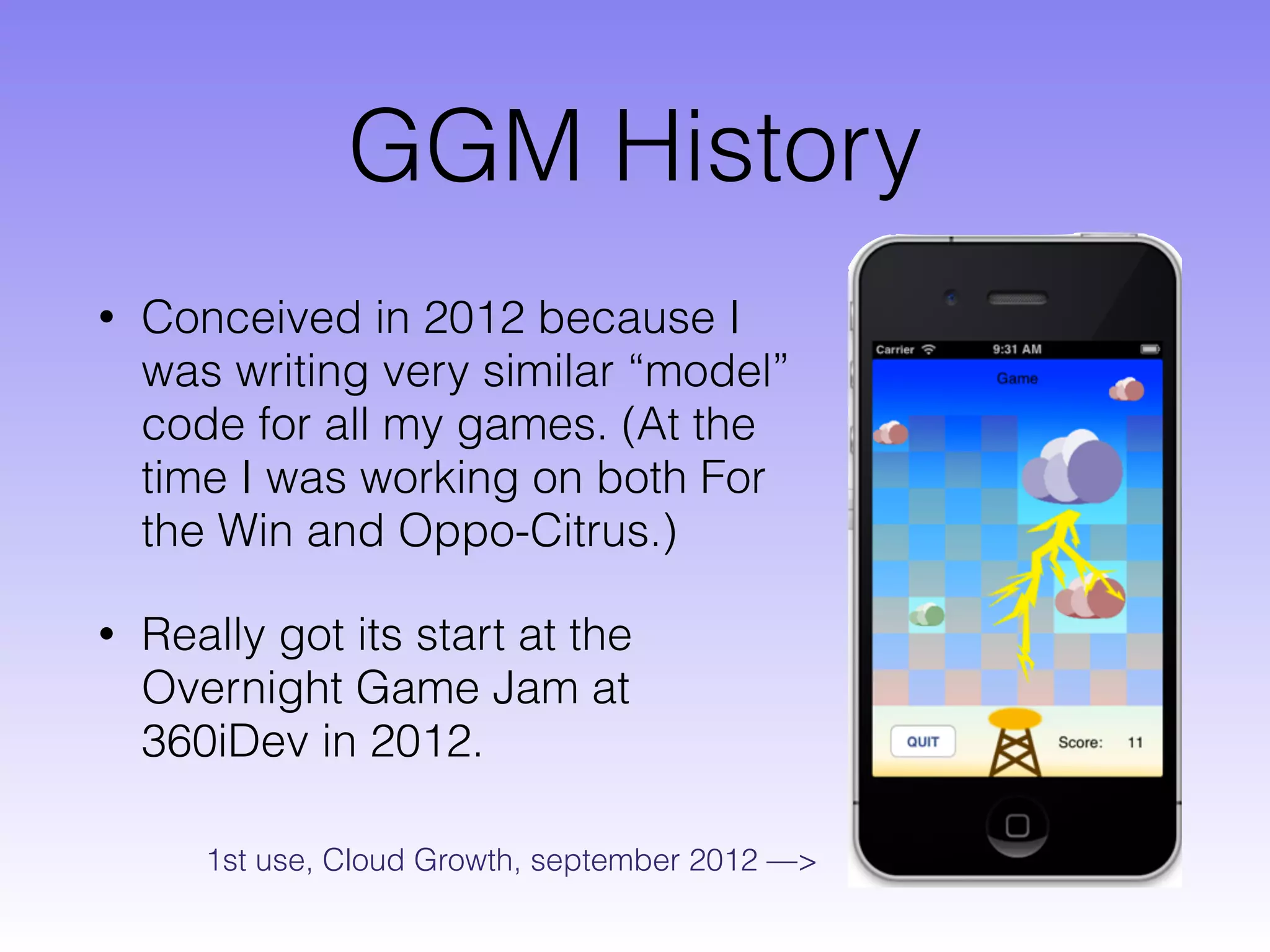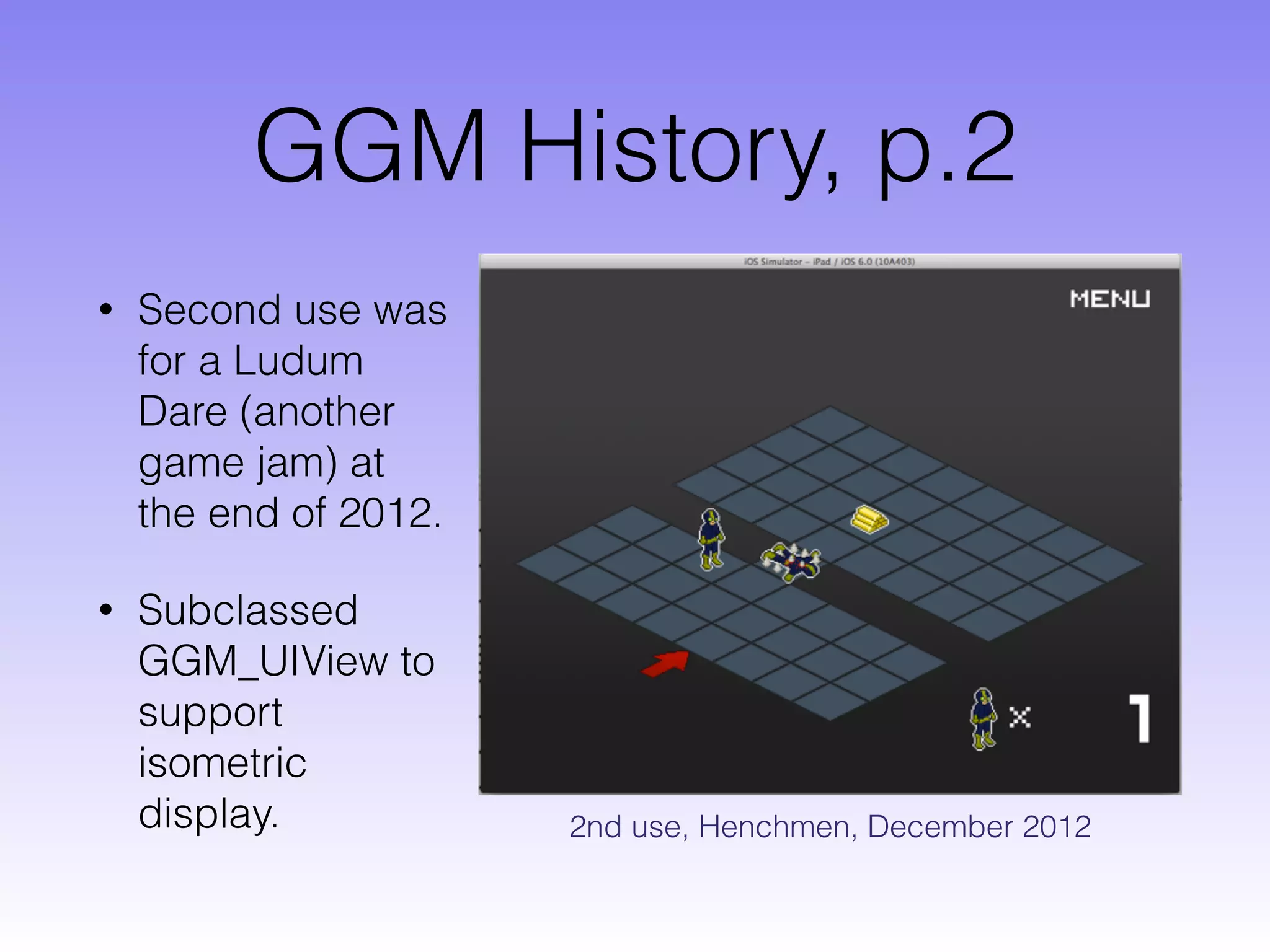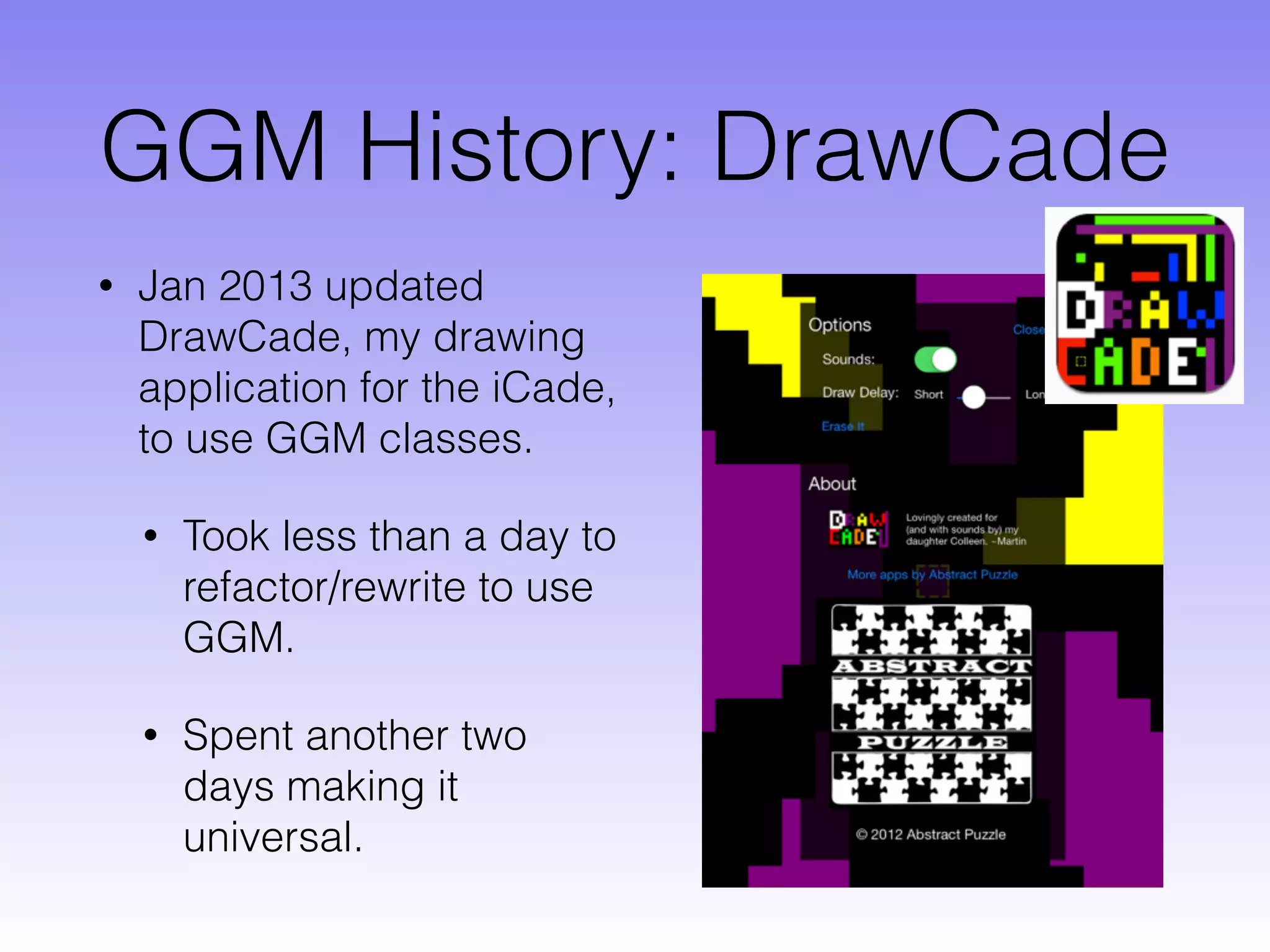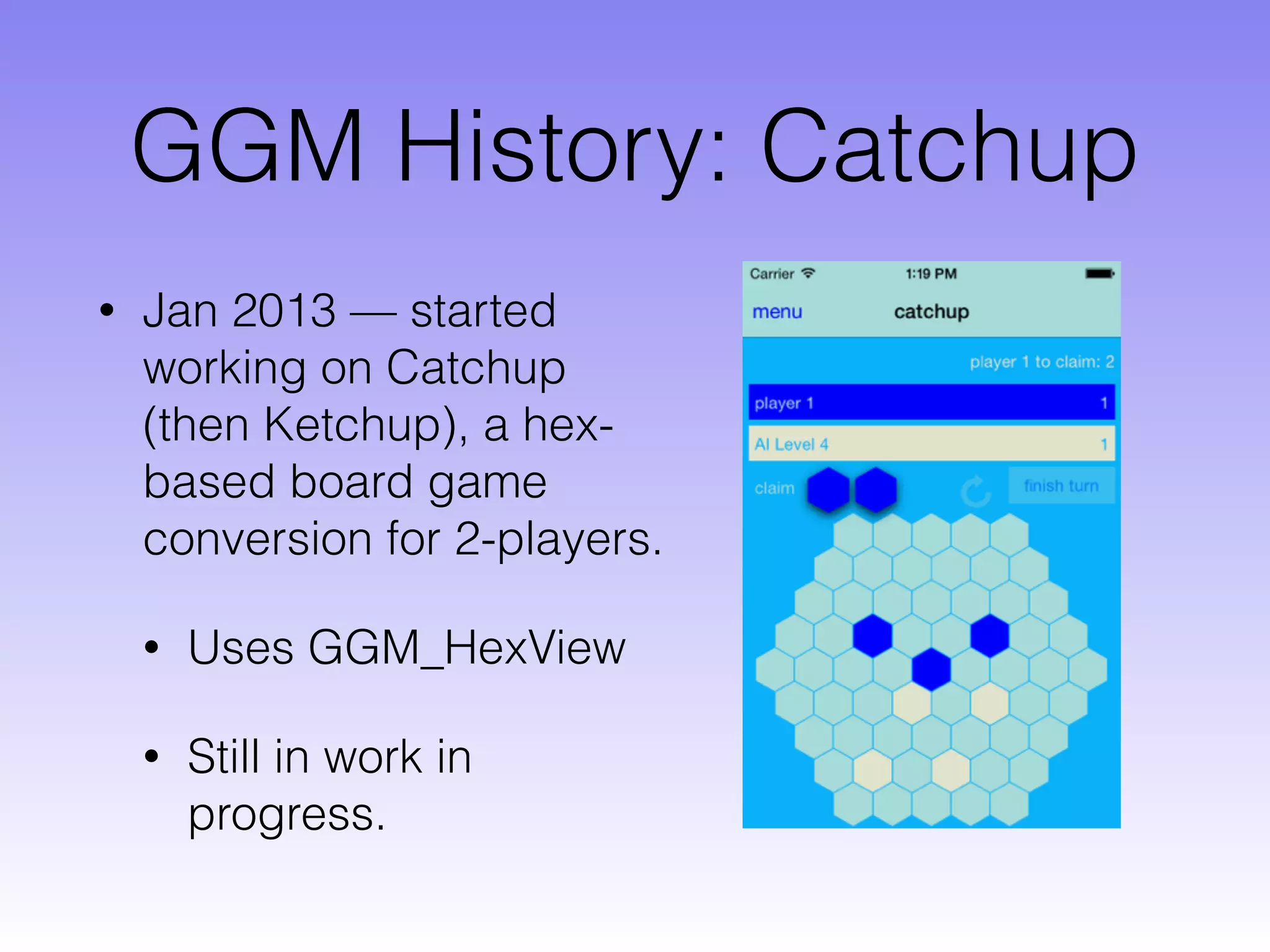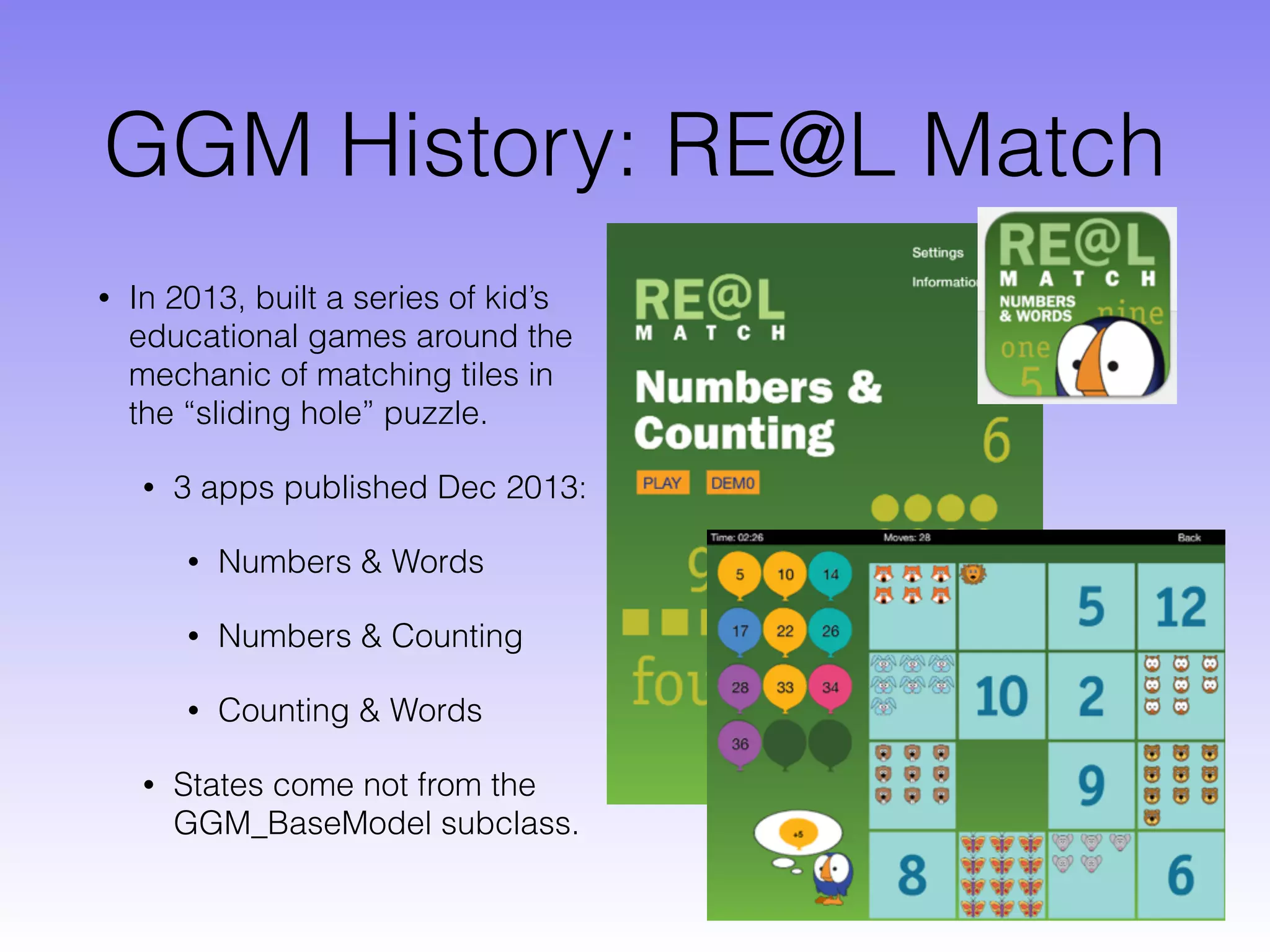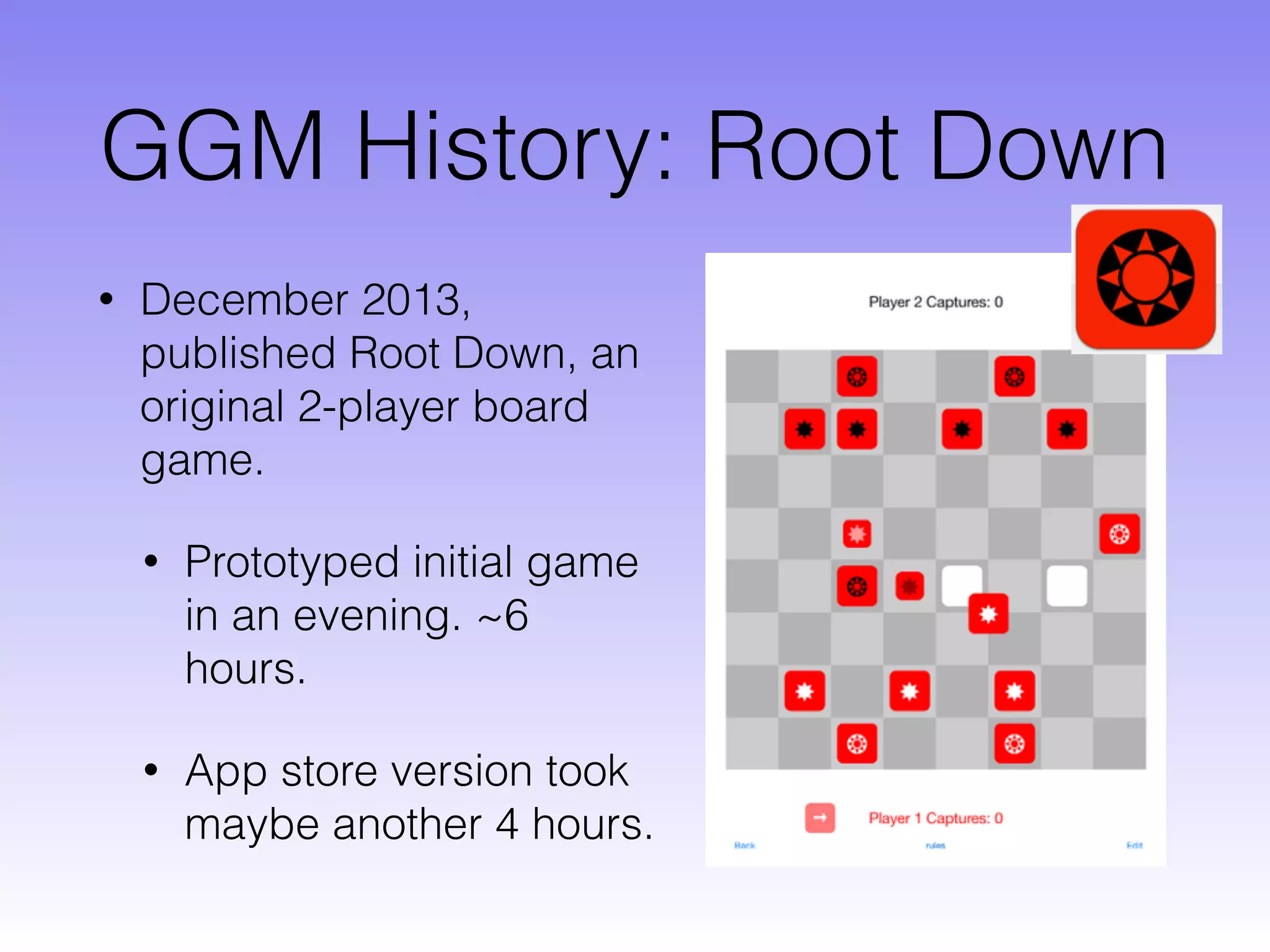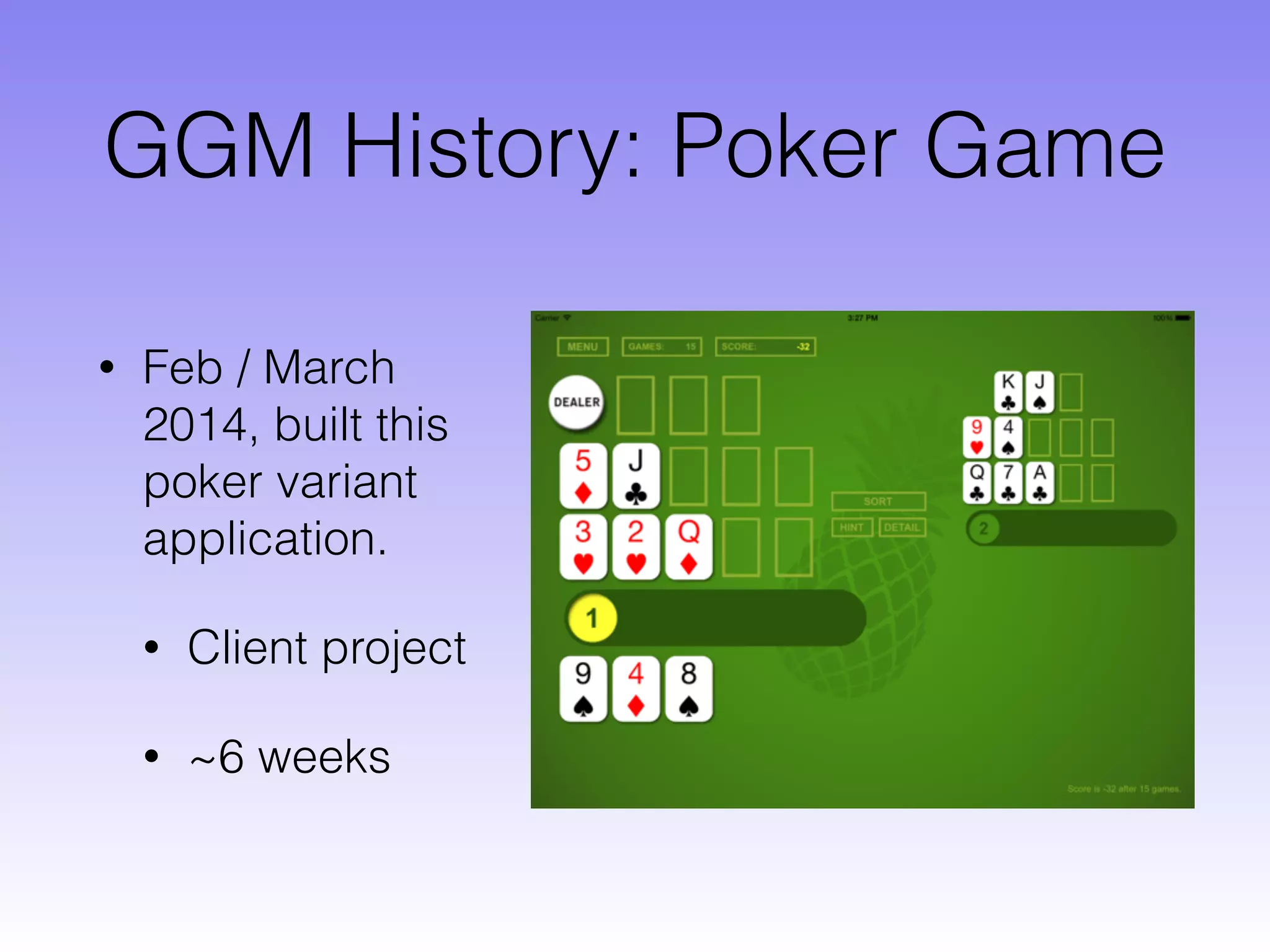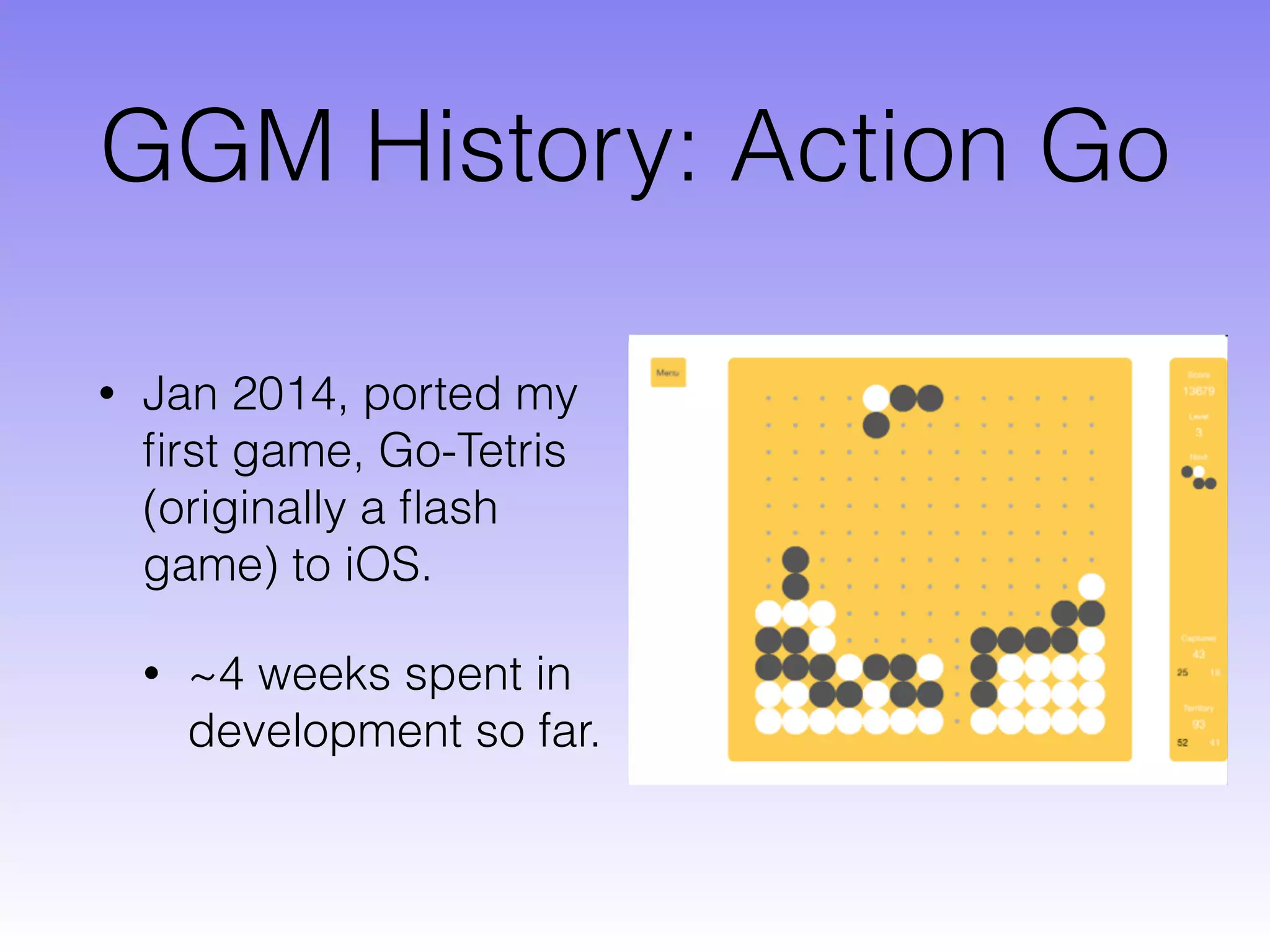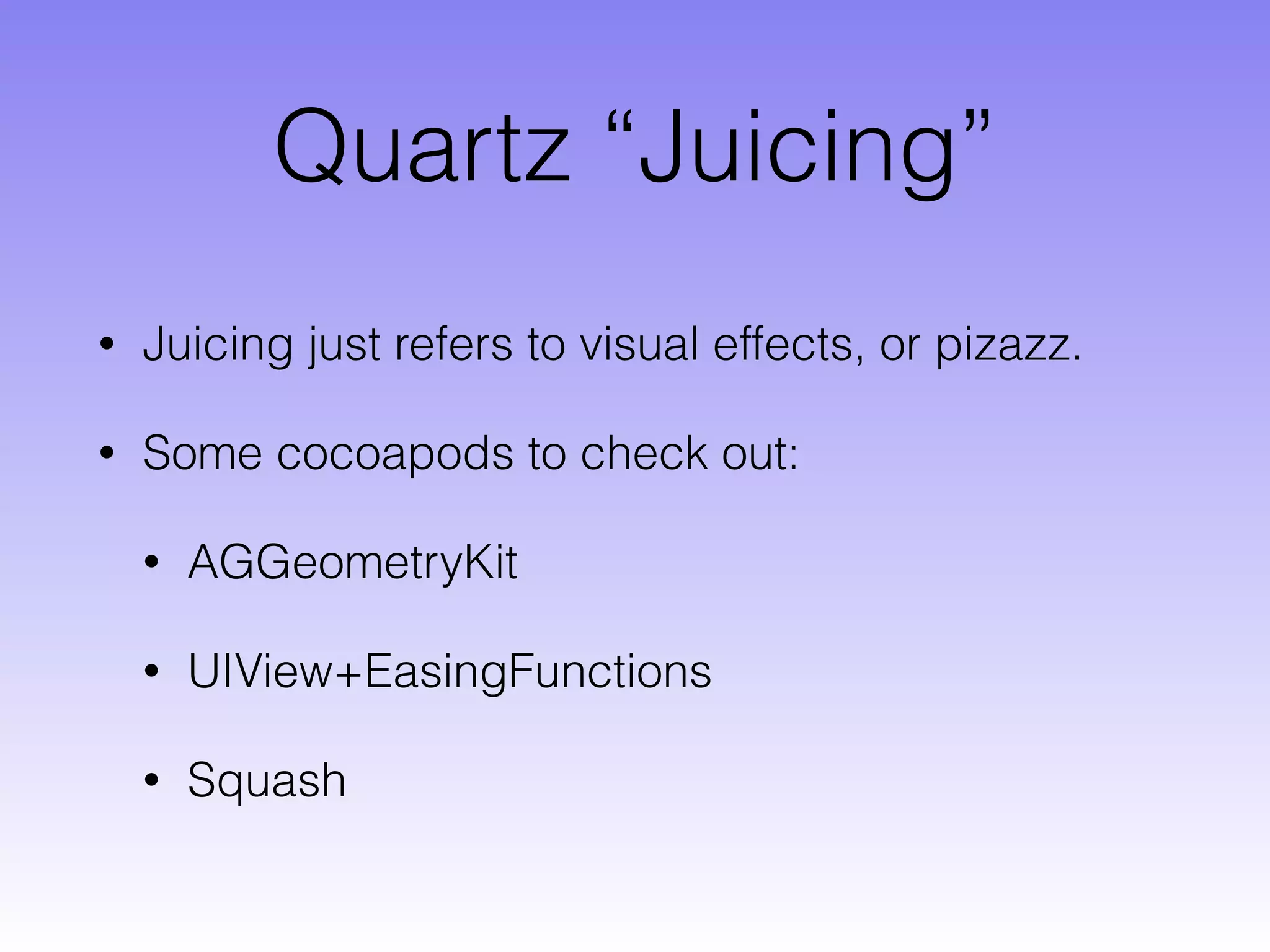The document introduces Generic Game Model (GGM), a collection of reusable classes for 2D game development in iOS using UIKit. GGM facilitates rapid prototyping by allowing developers to think in grid coordinates rather than pixels. It implements a common Model-View-Controller pattern for 2D games, with the model storing game state as integers in a multidimensional array and views displaying each state. GGM is available via CocoaPods and GitHub and includes base classes like GGM_BaseModel for saving game state and GGM_UIView for handling touch input and different grid types. The document provides a history of GGM's development and uses in several of the author's games starting in 2012.
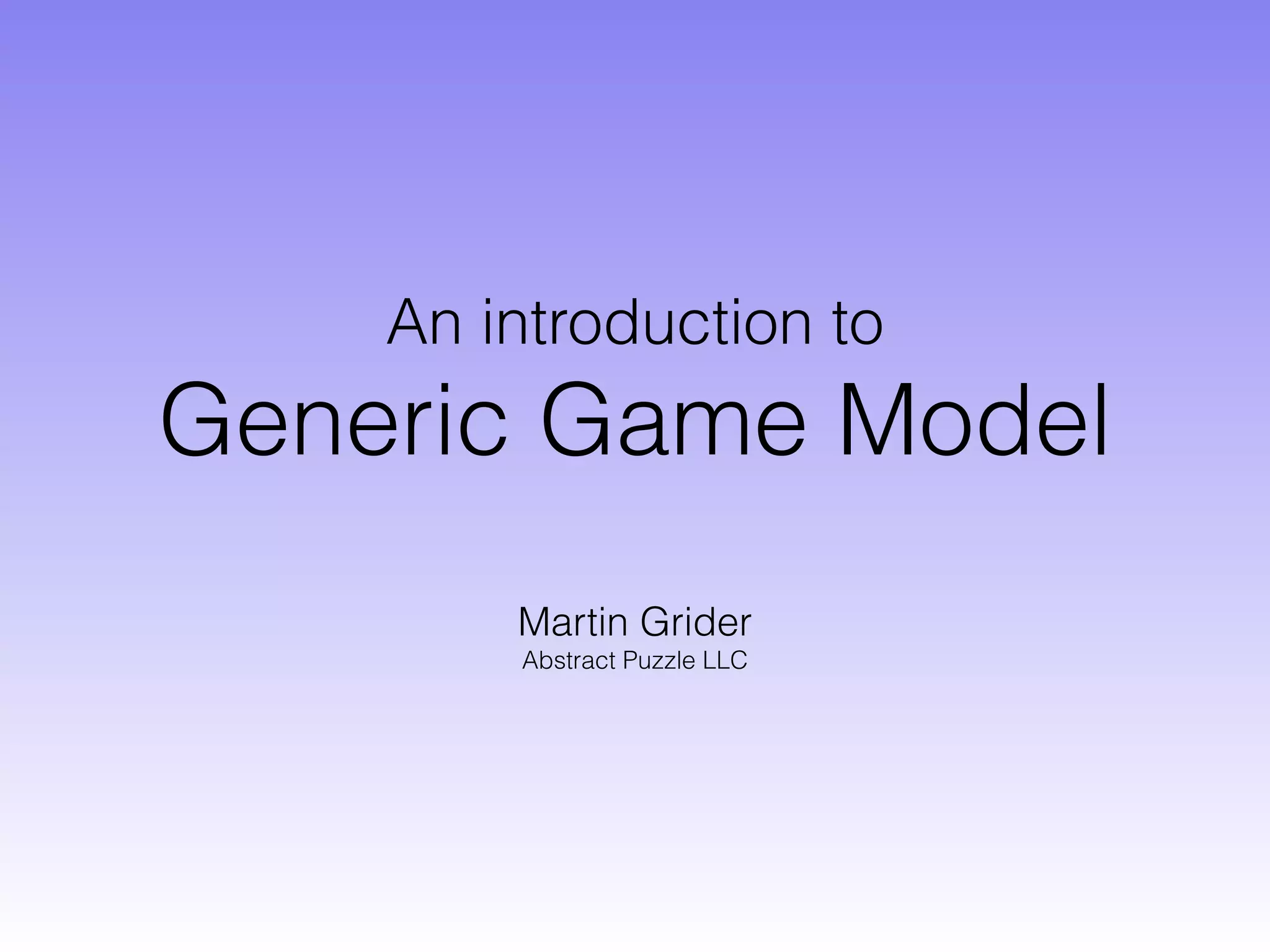
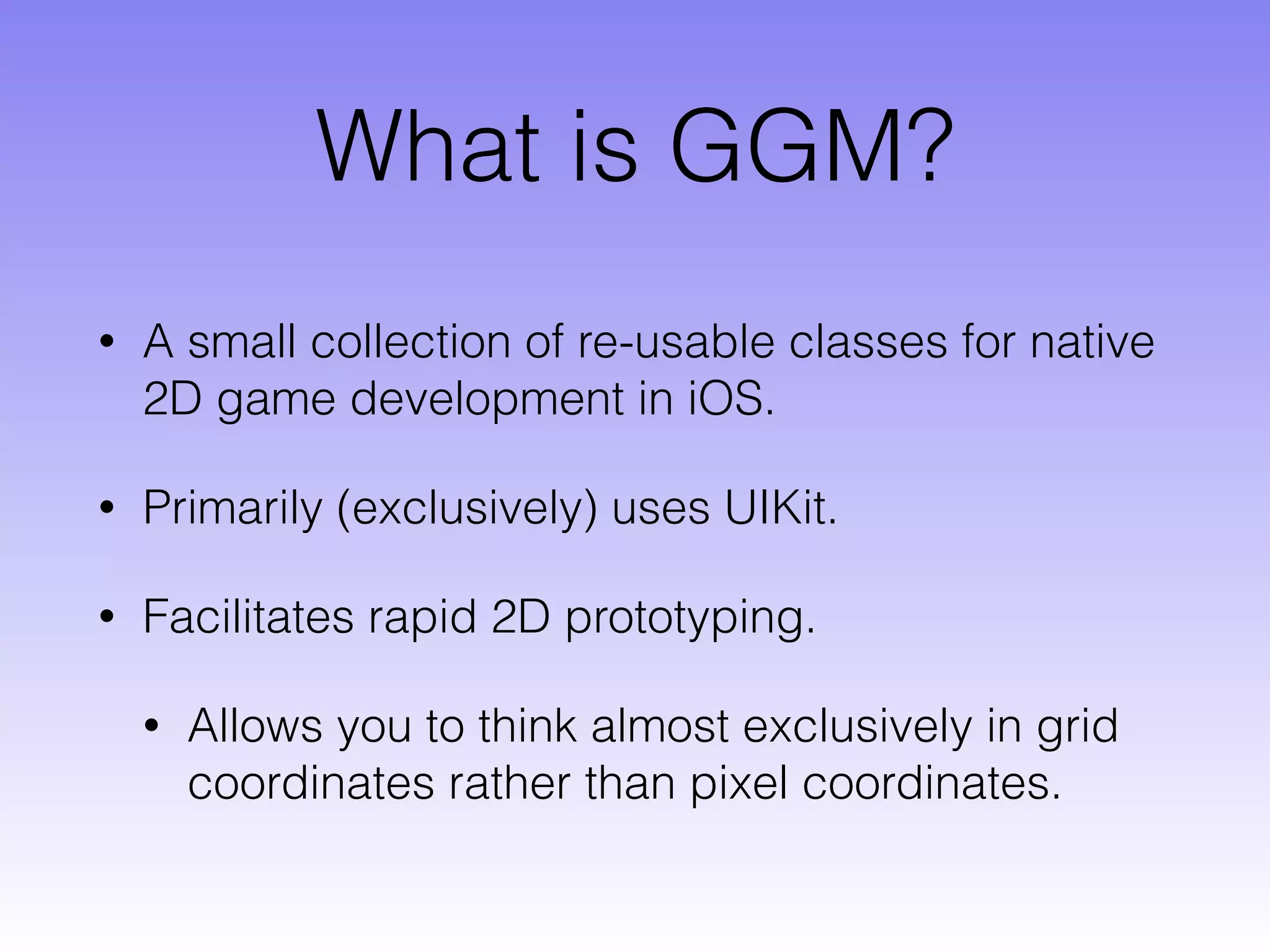
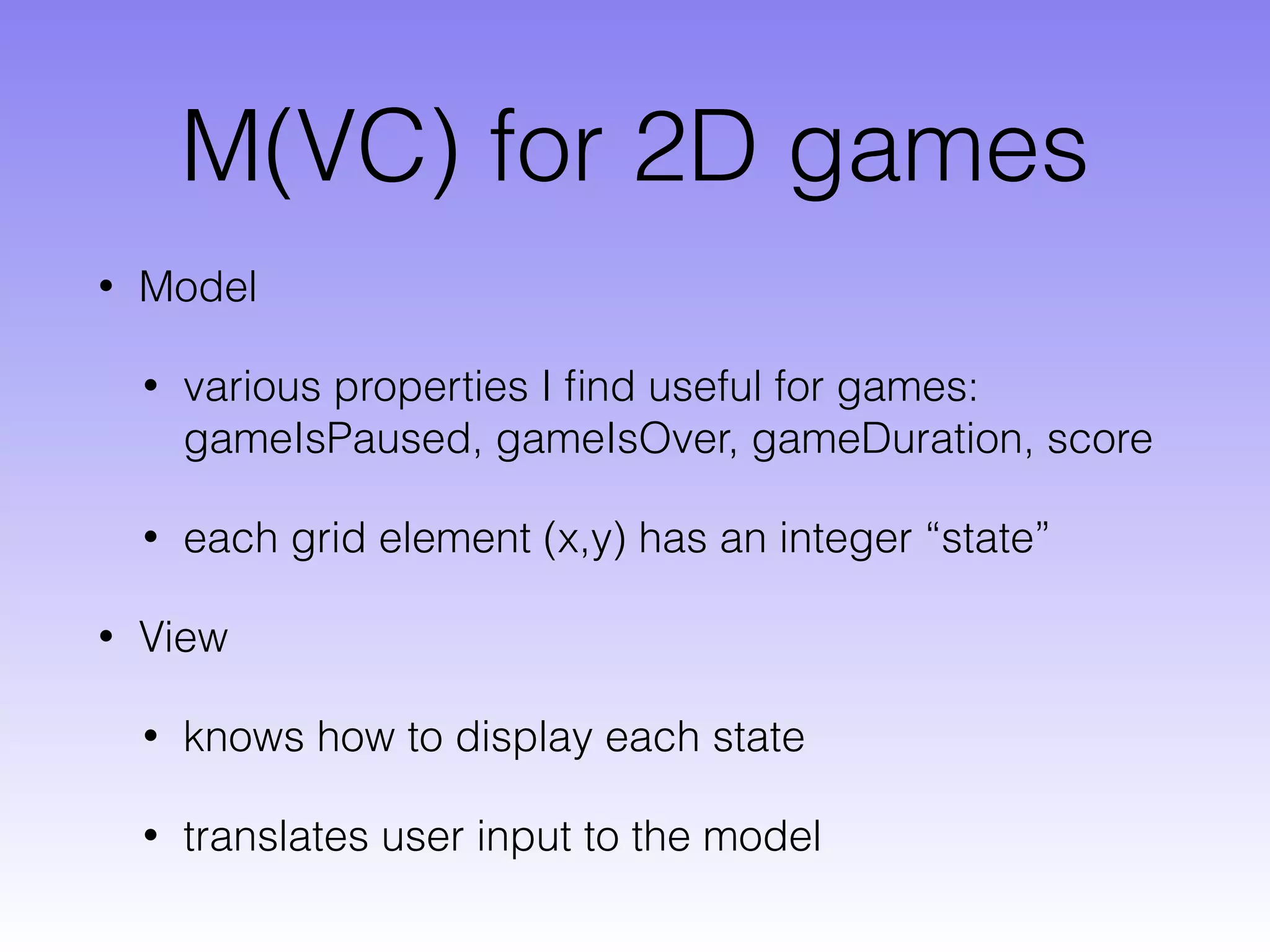
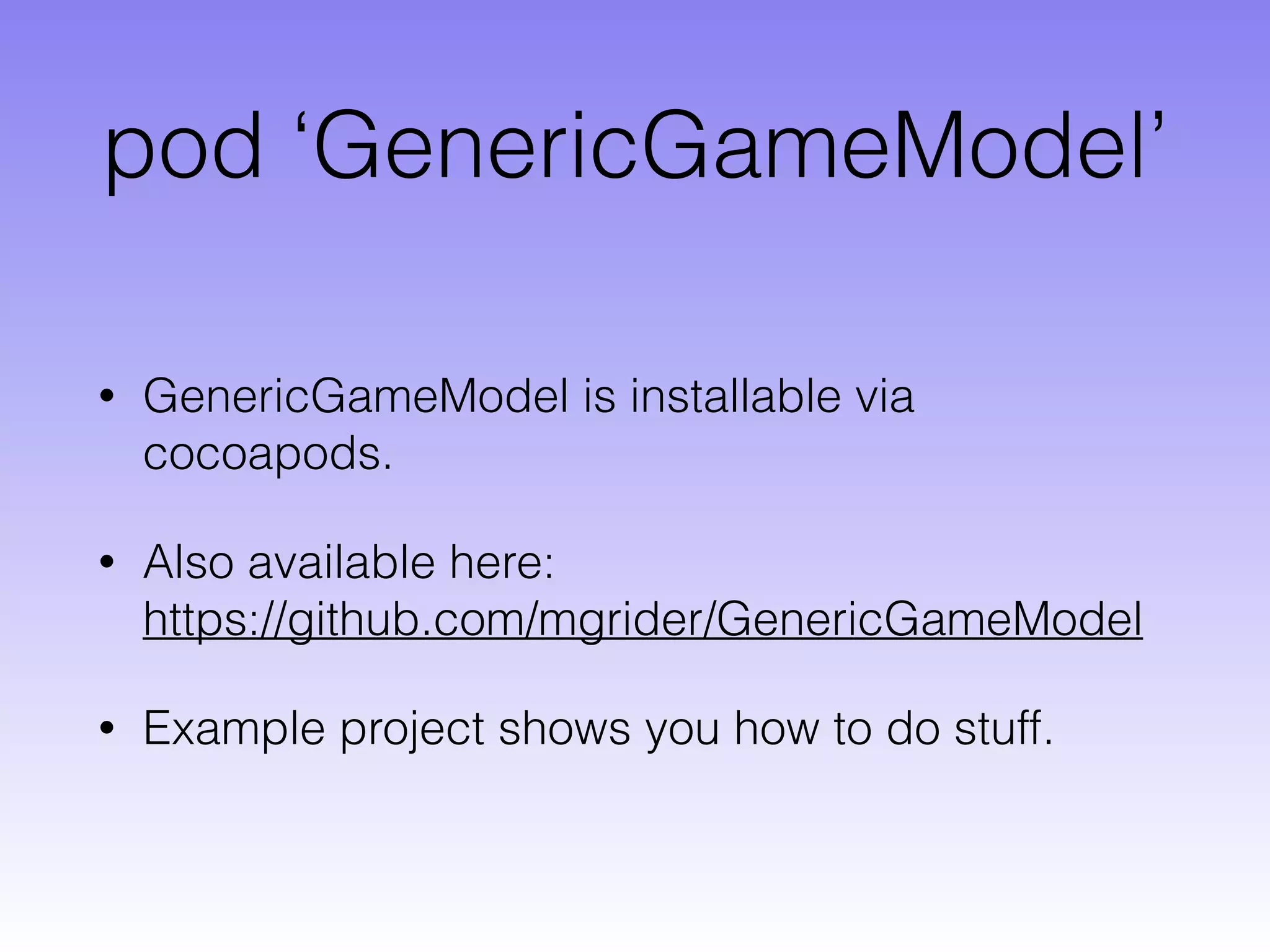
![GGM_BaseModel
• Subclasses BaseModel
• [self.game save]; — does all the encoding stuff or you.
• Game states are stored in a multidimensional array of
NSNumber objects.
• int s = [self.game stateAtX:x andY:y];
• [self.game setStateAtX:x andY:y toState:newState];
• Typically use key/value observing for score, sometimes for
GameIsOver. (Yes, this should be isGameOver, this, among
other things, needs refactoring.)](https://image.slidesharecdn.com/2014-cocoaheads-ggm-140410224547-phpapp02/75/An-introduction-to-Generic-Game-Model-5-2048.jpg)
